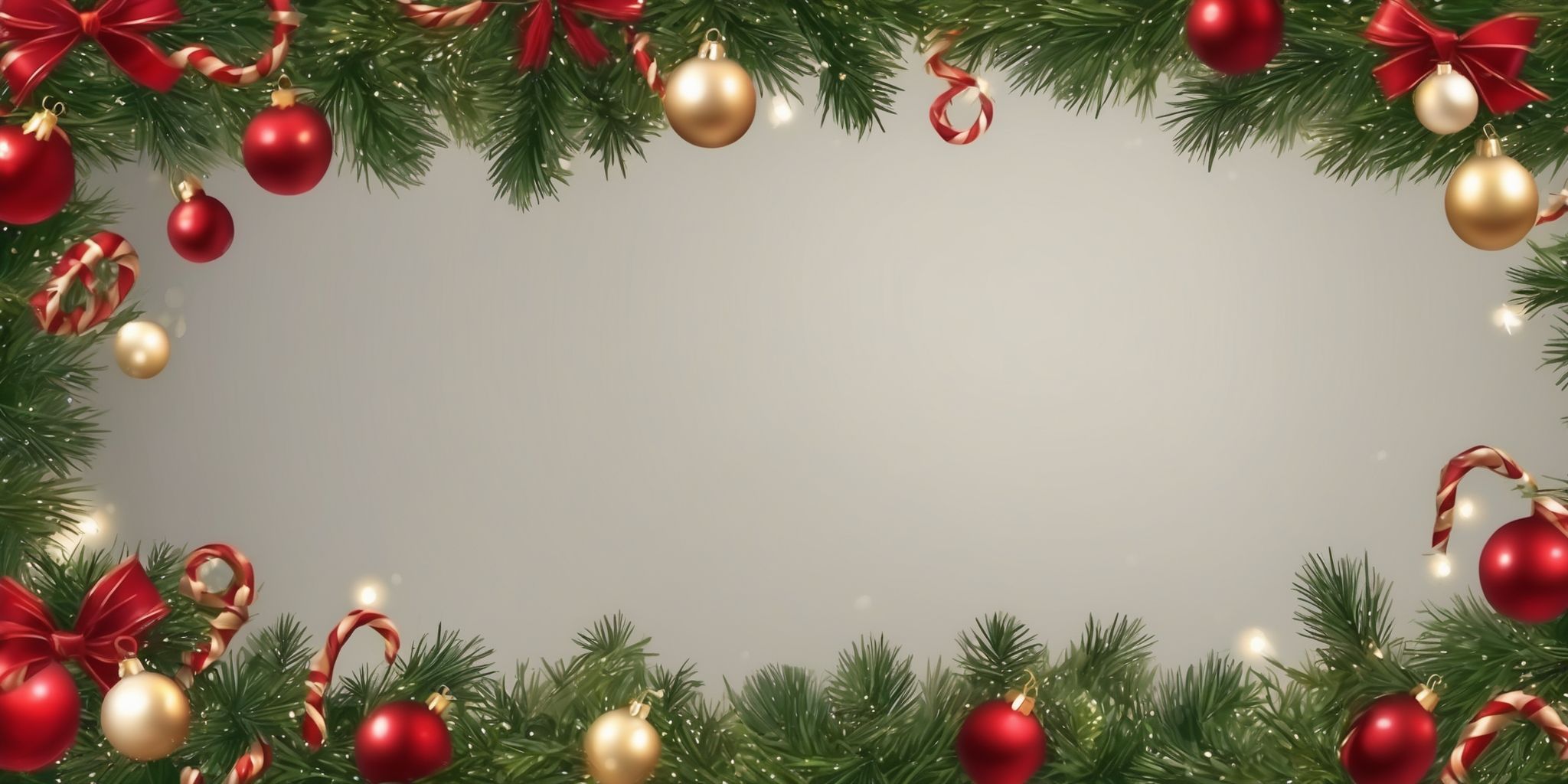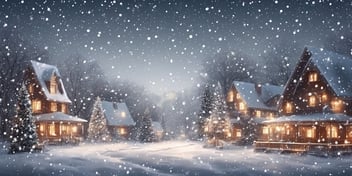- Blog
- Christmas song
- Jingle Bells: Unearthing the History of the Iconic Christmas Song

With the sound of sleigh bells echoing through the winter air, we welcome yet another festive season filled with joy, laughter, and catchy melodies that will undoubtedly get stuck in our heads for days on end. Among the musical clearings of the holiday season, there is one tune that reigns supreme – a melody that has become synonymous with Christmas cheer. Yes, you guessed it right: "Jingle Bells.
" This iconic song has adorned our celebrations for decades, but have you ever wondered how this catchy jingle came to be? Join us on a journey through time as we unearth the captivating history behind the beloved Christmas anthem that has stood the test of time.
Brief overview of Jingle Bells
Jingle Bells is a beloved and widely recognized Christmas song that has become synonymous with the holiday season. With its catchy melody and cheerful lyrics, it has brought joy to countless individuals worldwide. The song was composed by James Lord Pierpont in the mid-19th century and was originally titled "One Horse Open Sleigh." Over time, it has evolved and been adapted by various artists and cultures, reflecting its enduring popularity.
Whether heard in shopping malls, school concerts, or on the radio, Jingle Bells continues to evoke the festive spirit and spread holiday cheer.
Origins of Jingle Bells
James Lord Pierpont: The Composer
James Lord Pierpont is the composer credited with creating the iconic Christmas song "Jingle Bells." Born in 1822 in Boston, Pierpont came from a musical family and had a passion for writing and arranging music. He composed "Jingle Bells" in 1857, originally titled "One Horse Open Sleigh." This catchy tune caught the attention of the public and quickly became associated with the festive season.
Pierpont's composition showcased his ability to craft a melody that captures the joy and excitement of the holiday season, leaving a lasting impact on the world of Christmas music.
Biographical information on James Lord Pierpont
James Lord Pierpont, the composer of the iconic Christmas song "Jingle Bells," was born in 1822 in Massachusetts. He came from a musical family, with his father being a prominent musician and music director. Pierpont himself was a versatile musician, proficient in various instruments and genres. He served as an organist in several churches and composed other popular songs before creating "Jingle Bells.
" Pierpont's experience and background in music significantly influenced his ability to craft a catchy and enduring melody that resonates with people to this day.
Inspiration behind Jingle Bells
The inspiration behind the iconic Christmas song "Jingle Bells" stemmed from James Lord Pierpont's fascination with sleigh riding. Combining his love for music with the festive spirit of the holiday season, Pierpont composed the joyful tune in 1857. The lively rhythm and catchy melody captured the essence of merriment and celebration associated with Christmas.
The jingling sound of bells ringing from horse-drawn sleighs served as a direct influence, infusing the song with a sense of winter cheer. By drawing inspirations from real-life experiences and the unique sounds of the season, Pierpont crafted a timeless Christmas classic.
First Performance and Publication
The first performance of the Christmas song "Jingle Bells" took place in a church during a Thanksgiving concert in Savannah, Georgia in 1857. It was composed by James Lord Pierpont under the original title "One Horse Open Sleigh." The upbeat melody and catchy lyrics instantly resonated with the audience. Soon after the performance, the song was published in 1859 and gained popularity across the United States.
Its lively rhythm and joyful theme made it a perfect fit for Christmas celebrations, and it became a staple in holiday gatherings, parades, and events. The initial performance and subsequent publication played a significant role in establishing the song's enduring legacy.
Details of the first performance and reception
The first performance of the Christmas song "Jingle Bells" took place in a church in Savannah, Georgia in 1857. It was initially titled "One Horse Open Sleigh" and was well-received by the audience. The catchy melody and lively lyrics quickly captured the festive spirit. The song gained popularity through live performances during holiday events and gatherings. Over time, it became synonymous with Christmas celebrations, spreading across the United States and beyond.
Today, "Jingle Bells" is still performed and embraced by people of all ages during the holiday season, evoking a sense of joy and nostalgia.
Initial publication and popularity
When Jingle Bells was initially published in 1857, it quickly gained popularity and became a holiday sensation. Here are a few key points about its initial publication and widespread appeal:
- The catchy and uplifting melody of Jingle Bells captured the festive spirit, resonating with people of all ages.
- Its joyful lyrics and jingling sound effects made it a perfect fit for Christmas parties and celebrations.
- The song was widely performed in schools, churches, and community events, further spreading its popularity.
- Jingle Bells' success paved the way for its inclusion in Christmas carol books and sheet music, ensuring its enduring popularity.
- Over time, the song's popularity has only grown, making it an integral part of Christmas celebrations worldwide.
Evolution and Cultural Impact
Spread across America
The Christmas song "Jingle Bells" quickly spread across America and became a holiday staple. Its catchy melody and joyful lyrics resonated with people of all ages. The song found its way into Christmas events and celebrations, such as parades and caroling gatherings, where it fostered a sense of holiday cheer. Over time, various adaptations and variations of "Jingle Bells" emerged, showcasing its enduring popularity and adaptability.
This widespread adoption of the song further solidified its place in American Christmas traditions. Today, "Jingle Bells" continues to be sung and enjoyed during the festive season, keeping the spirit of Christmas alive.
Inclusion in Christmas events and celebrations
Jingle Bells is a staple in Christmas events and celebrations worldwide. Its infectious melody and joyful lyrics make it a favorite for holiday gatherings. Whether it's sung by carolers on the streets, played by marching bands in parades, or included in Christmas concerts, Jingle Bells never fails to bring a festive atmosphere. Many schools also incorporate the song into their holiday programs, with students enthusiastically singing along.
In addition, various community organizations host Jingle Bell-themed events, such as fun runs or festive markets, where the song is played to create a merry ambiance. Its inclusion in these events helps to create a shared sense of holiday spirit and tradition among participants.
Adaptations and variations of the song
Adaptations and variations of the song "Jingle Bells" have played a significant role in keeping the Christmas spirit alive. Artists and musicians from various genres have put their unique spin on the classic tune, making it suitable for diverse audiences. For instance, rock bands have given "Jingle Bells" an energetic edge, while jazz musicians have infused it with their improvisational melodies.
Additionally, orchestras have reimagined the song with grand arrangements, and choirs have performed beautiful vocal renditions. These adaptations allow the song to resonate with different tastes and ensure its continued popularity for generations to come.
International Recognition
Jingle Bells has achieved widespread international recognition as a beloved Christmas song. It has been translated into numerous languages and is sung and enjoyed in countries all around the world during the holiday season. Its catchy melody and joyful lyrics have made it a staple in Christmas celebrations across cultures. Furthermore, Jingle Bells' popularity has influenced and inspired the creation of other Christmas songs, demonstrating its enduring impact on the holiday music genre.
Whetherit's sung in English, Spanish, French, or any other language, Jingle Bells continues to resonate with people worldwide, spreading the festive spirit of Christmas.
Translations and popularity in different countries
Translations of "Jingle Bells" have played a significant role in its global popularity as a Christmas song. The song has been translated into numerous languages, allowing it to resonate with different cultures. It has been adapted to suit local customs and festivities, making it accessible and relatable worldwide.
For example, in Japan, a translated version called "Kaminari-sama" replaced the sleigh bells with thunder to align with their cultural traditions. Similarly, in France, it is known as "Vive le vent" and in Germany as "Kling Glöckchen," both reflecting the spirit of the original while incorporating local elements. These translations have helped "Jingle Bells" transcend language barriers and become a beloved Christmas classic around the world.
Influence on other Christmas songs
Jingle Bells has had a significant influence on other Christmas songs, shaping the sound and spirit of the holiday season. Its catchy melody and joyful lyrics have inspired countless composers and songwriters to create their own festive tunes. Some examples include:
- Incorporation of sleigh bells and jingling sounds in other songs to evoke a sense of wintertime and holiday cheer.
- Adapting the structure and rhythm of Jingle Bells into new compositions, creating a recognizable and familiar feel.
- Using similar themes of sleigh rides, snow, and merriment in lyrics to evoke the same festive atmosphere.
Controversies and Contested Origins
Claims of Other Composers
Claims of other composers have emerged regarding the origins of the Christmas song "Jingle Bells." Some argue that the melody was actually composed by someone other than James Lord Pierpont. Various investigations have been conducted to evaluate these competing claims, scrutinizing historical evidence, musical analysis, and testimonials. Although these alternative theories exist, the majority of scholars and experts maintain that Pierpont is the rightful composer.
The controversy surrounding the true origin adds an intriguing layer to the history of "Jingle Bells," sparking ongoing discussions and debates among music enthusiasts.
Investigation into alternate origins of Jingle Bells
Investigating alternate origins of "Jingle Bells" sheds light on its complex history. Researchers have explored competing claims to unearth the true composer and origins of the song. This examination includes analyzing historical documents, music scores, and testimonies. While James Lord Pierpont is widely credited as the composer, some claimants challenge this assertion. By evaluating the authentic sources and considering the cultural context of the time, experts aim to unravel the mystery.
This investigation provides a deeper understanding of the Christmas song's evolution and highlights the importance of preserving its accurate history for future generations.
Evaluating the authenticity of competing claims
Evaluating the authenticity of competing claims surrounding the origins of the Christmas song "Jingle Bells" requires careful examination of historical evidence and cross-referencing with credible sources. Researchers analyze elements like composition date, songwriter's background, and documented performances to assess each claim's validity.
For example, comparing timestamps on original manuscripts and sheet music can help determine the earliest known version.
Additionally, investigating the reputation of competing composers and their influence on the music scene of that era contributes to the evaluation process. By conducting thorough research, historians can shed light on the true origins of "Jingle Bells" and dispel any misconceptions.
Racial Stereotypes in Jingle Bells
The classic Christmas song Jingle Bells has faced criticism for its controversial racial stereotypes present in some versions. Particularly, the line "Laughing all the way, ha ha ha!" has been interpreted as mocking African American speech. This cultural insensitivity raises valid concerns about the song's continued inclusion in modern celebrations. It is essential to reevaluate and adjust such lyrics to ensure they align with our evolving understanding of inclusivity and respect. By acknowledging and addressing these stereotypes, we can promote a more inclusive and culturally sensitive holiday season for all.
Examining the controversial lyrics and their context
Examining the controversial lyrics of "Jingle Bells" in the context of a Christmas song sheds light on its historical significance. The song's disputed racial stereotypes have sparked debate among scholars and activists. By delving into the lyrics and their historical context, we can gain a better understanding of the complexities surrounding cultural representations in holiday music.
Considering the implications of these lyrics encourages us to critically reflect on the broader issues of racial and cultural sensitivity in our festive traditions. This examination fosters important discussions on inclusivity and cultural awareness during the holiday season.
Debate on the inclusion or exclusion of certain verses
Debate arises surrounding the inclusion or exclusion of certain verses in the Christmas song "Jingle Bells." Some argue that removing controversial elements, such as racially insensitive lyrics, is necessary to promote inclusivity and respect. Others advocate for preserving the song's original form to maintain historical integrity. This contentious issue demonstrates the ongoing struggle to balance cultural sensitivity with the preservation of artistic works.
Finding common ground may involve engaging in open discussions, considering diverse perspectives, and making informed decisions that respect the evolving values and sensibilities of society.
Legacy of Jingle Bells
Enduring Popularity
Despite being over 160 years old, the enduring popularity of the Christmas song "Jingle Bells" remains undeniable. Its catchy melody and joyful lyrics have become synonymous with the holiday season, making it a staple in Christmas celebrations worldwide. Whether it's playing on the radio, featured in movies, or sung by carolers, "Jingle Bells" continues to evoke feelings of festive cheer and nostalgia.
Its timeless appeal transcends generations, uniting people in a shared experience of holiday spirit. From family gatherings to holiday parties, the enduring popularity of "Jingle Bells" brings people together and creates lasting memories during the most wonderful time of the year.
Analysis of Jingle Bells' continued appeal
Analysis of Jingle Bells' continued appeal reveals its timeless charm and catchy melody. Its simple yet joyful lyrics resonate with people of all ages and cultures. The song's upbeat tempo and repetitive structure make it easy to sing along and remember. Furthermore, its association with Christmas and holiday festivities enhances its popularity each year. Jingle Bells' ability to evoke feelings of nostalgia and celebrate the spirit of the season contributes to its enduring appeal.
From school choirs to carolers on the streets, the song's universal appeal ensures its presence in various cultural and media references, solidifying its place as a beloved Christmas classic.
Use in various media and cultural references
Jingle Bells, the iconic Christmas song, has permeated various forms of media and become deeply ingrained in popular culture. It is often utilized in commercials, TV shows, and movies to evoke a festive atmosphere and convey the spirit of the holiday season. From heartwarming family films to amusing advertisements, the melody of Jingle Bells is instantly recognizable and elicits feelings of joy and anticipation.
Additionally, it is frequently referenced in books, artwork, and even fashion, serving as a symbol of the Christmas tradition. Its widespread use in diverse media reflects the enduring appeal and universality of this beloved Christmas song.
Preserving the History
Efforts to document and protect the history of the Christmas song "Jingle Bells" are important in maintaining its cultural significance. Researchers and institutions play a vital role in this process by conducting thorough investigations into its origins and evolution. By collecting and archiving relevant information, they ensure that future generations can understand and appreciate the song's historical context. Additionally, collaborations between historians, musicians, and educators can help incorporate "Jingle Bells" into educational materials, performances, and exhibitions, promoting its continued relevance and ensuring its preservation for years to come.
Efforts to document and protect Jingle Bells' origin
Efforts to document and protect Jingle Bells' origin have been made by music historians and scholars. By conducting extensive research and gathering historical evidence, they aim to preserve the accurate history of the beloved Christmas song. This includes examining original manuscripts, collecting oral histories, and analyzing archival materials.
By documenting the true origins of Jingle Bells, these efforts ensure that the song's legacy is accurately represented and that any misconceptions orfalse claims are dispelled. This research not only provides a deeper understanding of the song's creation but also contributes to the broader field of music history.
Importance of understanding cultural context
Understanding the cultural context of the Christmas song "Jingle Bells" is important for appreciating its significance. It helps us recognize the song's historical and social implications, allowing for a deeper understanding and interpretation. By understanding the cultural context, we can identify the message and symbols embedded within the lyrics and music, enabling us to connect with the song on a more meaningful level.
For example, recognizing the social and historical background of "Jingle Bells" can shed light on the evolving traditions and celebrations associated with Christmas. This understanding allows us to cherish and preserve the cultural heritage of the song while also influencing our own interpretations and adaptations.
Final thoughts
Discover the fascinating history behind the beloved Christmas song, "Jingle Bells". This iconic tune, originally titled "One Horse Open Sleigh", was written in the 19th century by James Lord Pierpont. It was first performed during a Thanksgiving celebration in 1857 and quickly gained popularity. The song's catchy melody and joyful lyrics about taking a sleigh ride in winter have made it a timeless holiday favorite.
Over the years, "Jingle Bells" has been covered by countless artists and has become synonymous with Christmas cheer. Its enduring legacy continues to bring smiles and holiday spirit to people around the world.
Read On

Jingle Bells: A Closer Look at the Lyrics
Jingle Bells, the beloved winter anthem that joyfully echoes through the holiday season, is a...

Ring in the Holidays with Jingle Bells: A Collection of Festive Christmas Songs
The most wonderful time of the year has arrived, and with it comes the magical sound of jingle...

Discover the Most Beloved Merry Christmas Songs of All Time
Ah, the joyful sound of sleigh bells rings in the air, marking the arrival of the most magical time...